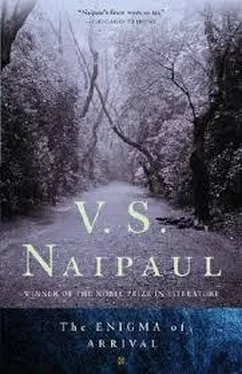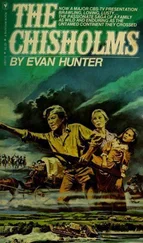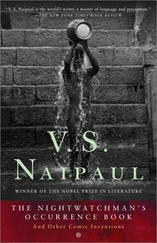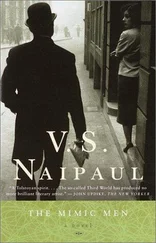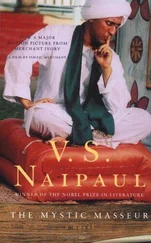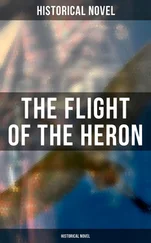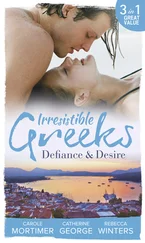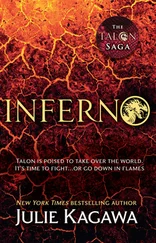V. Naipaul - The Enigma of Arrival
Здесь есть возможность читать онлайн «V. Naipaul - The Enigma of Arrival» весь текст электронной книги совершенно бесплатно (целиком полную версию без сокращений). В некоторых случаях можно слушать аудио, скачать через торрент в формате fb2 и присутствует краткое содержание. Год выпуска: 2012, Издательство: Picador, Жанр: Современная проза, на английском языке. Описание произведения, (предисловие) а так же отзывы посетителей доступны на портале библиотеки ЛибКат.
- Название:The Enigma of Arrival
- Автор:
- Издательство:Picador
- Жанр:
- Год:2012
- ISBN:нет данных
- Рейтинг книги:3 / 5. Голосов: 1
-
Избранное:Добавить в избранное
- Отзывы:
-
Ваша оценка:
- 60
- 1
- 2
- 3
- 4
- 5
The Enigma of Arrival: краткое содержание, описание и аннотация
Предлагаем к чтению аннотацию, описание, краткое содержание или предисловие (зависит от того, что написал сам автор книги «The Enigma of Arrival»). Если вы не нашли необходимую информацию о книге — напишите в комментариях, мы постараемся отыскать её.
The Enigma of Arrival — читать онлайн бесплатно полную книгу (весь текст) целиком
Ниже представлен текст книги, разбитый по страницам. Система сохранения места последней прочитанной страницы, позволяет с удобством читать онлайн бесплатно книгу «The Enigma of Arrival», без необходимости каждый раз заново искать на чём Вы остановились. Поставьте закладку, и сможете в любой момент перейти на страницу, на которой закончили чтение.
Интервал:
Закладка:
The other, internal irony was that my father, though devoted to Hindu speculative thought, had disliked ritual and had always, even in the 1920s, belonged to the reformist group the pundit didn’t care for and dismissed now as hypocrites. My sister Sati had no liking for ritual either. But at her death there was in her family a wish to give sanctity to the occasion, a wish for old rites, for things that were felt specifically to represent us and our past. So the pundit had been called in; and on the terrazzo floor of my sister’s veranda symbolical ceremonies had been played out on an earth altar, laid with a miniature pyre of fragrant pitch pine and flowers and sugar which, when soaked with clarified butter and set alight, made a sweet caramel smell.
We were immemorially people of the countryside, far from the courts of princes, living according to rituals we didn’t always understand and yet were unwilling to dishonor because that would cut us off from the past, the sacred earth, the gods. Those earth rites went back far. They would always have been partly mysterious. But we couldn’t surrender to them now. We had become self-aware. Forty years before, we would not have been so self-aware. We would have accepted; we would have felt ourselves to, be more whole, more in tune with the land and the spirit of the earth.
It would have been easier to accept, too, because forty years before, it would have been all so much poorer, so much closer to the Indian past: houses, roads, vehicles, clothes. Now money had touched us all — like a branch of a tree or a twig dipped in gold, according to some designer’s extravagant whim, and made to keep the shape of the twig or the leaf. Generations of a new kind of education had separated us from our past; and travel; and history. And the money that had come to our island, from oil and natural gas.
That money, that unexpected bounty, had ravaged and remade the landscape where we had had our beginnings in the New World. When I was a child the hills of the Northern Range which I looked at when I traveled up to Port of Spain on the ten-mile-an-hour train were bare — primary forest still in parts. Now halfway up those hills there were the huts and shacks of illegal immigrants from the other islands. Small islands surrounded by sea: plantation barracoons, slavery and Africa quarantined and festering together for two centuries: immigrants from those islands had altered our landscape, our population, our mood.
Where there had been swamp at the foot of the Northern Range, with mud huts with earthen walls that showed the damp halfway up, there was now a landscape of Holland: acres upon acres of vegetable plots, the ridges and furrows and irrigation canals straight. Sugarcane as a crop had ceased to be important. None of the Indian villages were like villages I had known. No narrow roads; no dark, overhanging trees; no huts; no earth yards with hibiscus hedges; no ceremonial lighting of lamps, no play of shadows on the wall; no cooking of food in half-walled verandas, no leaping firelight; no flowers along gutters or ditches where frogs croaked the night away. But highways and clover-shaped exits and direction boards: a wooded land laid bare, its secrets opened up.
We had made ourselves anew. The world we found ourselves in — the suburban houses, with gardens, where my sister’s farewell ceremony had taken place — was one we had partly made ourselves, and had longed for, when we had longed for money and the end of distress; we couldn’t go back. There was no ship of antique shape now to take us back. We had come out of the nightmare; and there was nowhere else to go.
The pundit gave his last instructions. One brass plate with consecrated food was to be placed somewhere; another plate of food was to be cast into the river that had borne away her ashes: a final offering. Then, a big man dressed in cream-colored silk, the silk showing the heaviness above his waist, the pundit got in his car and drove away. (Such memories I had of Sunday visits, holiday excursions, with my father to his family house — my father’s brother’s house — forty years and more before: flat sugarcane fields all around, grass tracks between the fields, scattered huts and houses on stilts and tall pillars, dimly lit at night, animals in some yards, bonfires of grass to keep away mosquitoes, grocery shops with pitched corrugated-iron roofs, and silence.)
A visitor, an old man, a distant relation of my sister’s husband, began — perhaps because of the ceremonies that had taken place — to talk of our past, and of the difference between us, originally from the Gangetic plain, immigrants to the New World since 1845, and the other Indians in other parts of the island, especially in the villages to the northwest of Port of Spain.
This man said, “Those other people haven’t been here since 1845, you know. They’ve been here long, long before. You’ve heard about Columbus? Well, Queen Isabella opened this place up to everybody, provided they was Catholics. And that was when the French came in. They was Catholics, you see. Now, you hear about a place in India called Pondicherry? That was the French place in India, and that was where they bring over those Indians near Port of Spain from. So those Indian people up in Boissière and places like that, they not like us — they’ve been here four, five hundred years.”
History! He had run together the events of 1498, when Columbus had discovered the island for Queen Isabella on his third voyage; 1784, when the Spanish authorities, after three hundred years of neglect, and out of a wish to protect their empire, opened up the island to Catholic immigration, giving preference and free land to people who could bring in slaves; and 1845, when the British, ten years after slavery had been abolished in the British Empire, began to bring in Indians from India to work the land. He had created a composite history. But it was enough for him. Men need history; it helps them to have an idea of who they are. But history, like sanctity, can reside in the heart; it is enough that there is something there.
Our sacred world — the sanctities that had been handed down to us as children by our families, the sacred places of our childhood, sacred because we had seen them as children and had filled them with wonder, places doubly and trebly sacred to me because far away in England I had lived in them imaginatively over many books and had in my fantasy set in those places the very beginning of things, had constructed out of them a fantasy of home, though I was to learn that the ground was bloody, that there had been aboriginal people there once, who had been killed or made to die away — our sacred world had vanished. Every generation now was to take us further away from those sanctities. But we remade the world for ourselves; every generation does that, as we found when we came together for the death of this sister and felt the need to honor and remember. It forced us to look on death. It forced me to face the death I had been contemplating at night, in my sleep; it fitted a real grief where melancholy had created a vacancy, as if to prepare me for the moment. It showed me life and man as the mystery, the true religion of men, the grief and the glory. And that was when, faced with a real death, and with this new wonder about men, I laid aside my drafts and hesitations and began to write very fast about Jack and his garden.
October 1984-April 1986
ABOUT THE AUTHOR
In 1932, V.S. Naipaul was born to an Indian family in colonial Trinidad. Attending Oxford in 1950 on a scholarship, his literary career began immediately after finishing university. He has since published over twenty books of fiction and nonfiction, including A House for Mr. Biswas, Among the Believers, Magic Seeds , and The Enigma of Arrival . Naipaul’s lifelong passion for travel and travel writing began in 1960, and his voyages through the West Indies, South America, Asia, Africa, and the United States have been recorded in great works such as The Middle Passage , his acclaimed India trilogy, The Loss of El Dorado , and A Turn in the South .
Читать дальшеИнтервал:
Закладка:
Похожие книги на «The Enigma of Arrival»
Представляем Вашему вниманию похожие книги на «The Enigma of Arrival» списком для выбора. Мы отобрали схожую по названию и смыслу литературу в надежде предоставить читателям больше вариантов отыскать новые, интересные, ещё непрочитанные произведения.
Обсуждение, отзывы о книге «The Enigma of Arrival» и просто собственные мнения читателей. Оставьте ваши комментарии, напишите, что Вы думаете о произведении, его смысле или главных героях. Укажите что конкретно понравилось, а что нет, и почему Вы так считаете.
